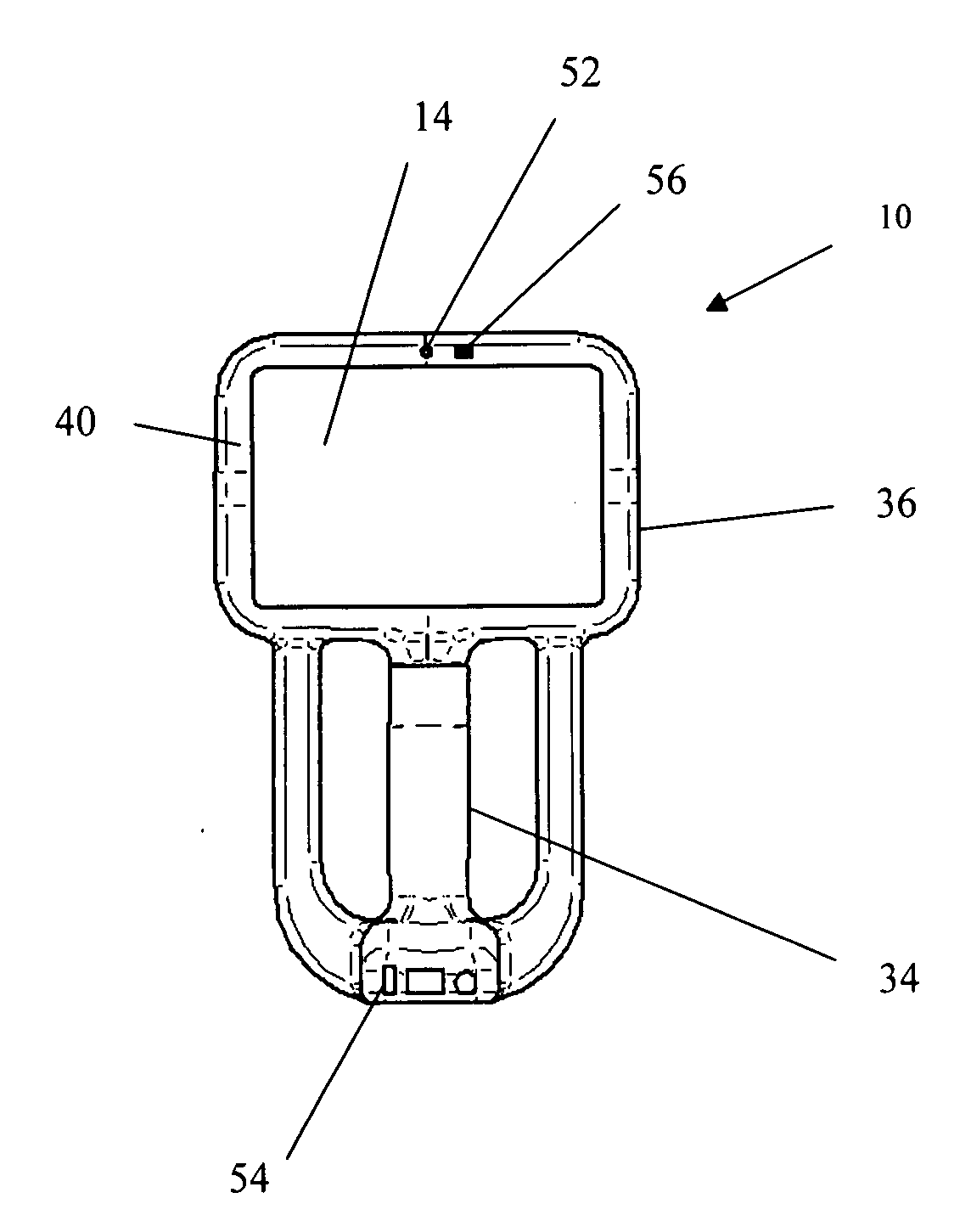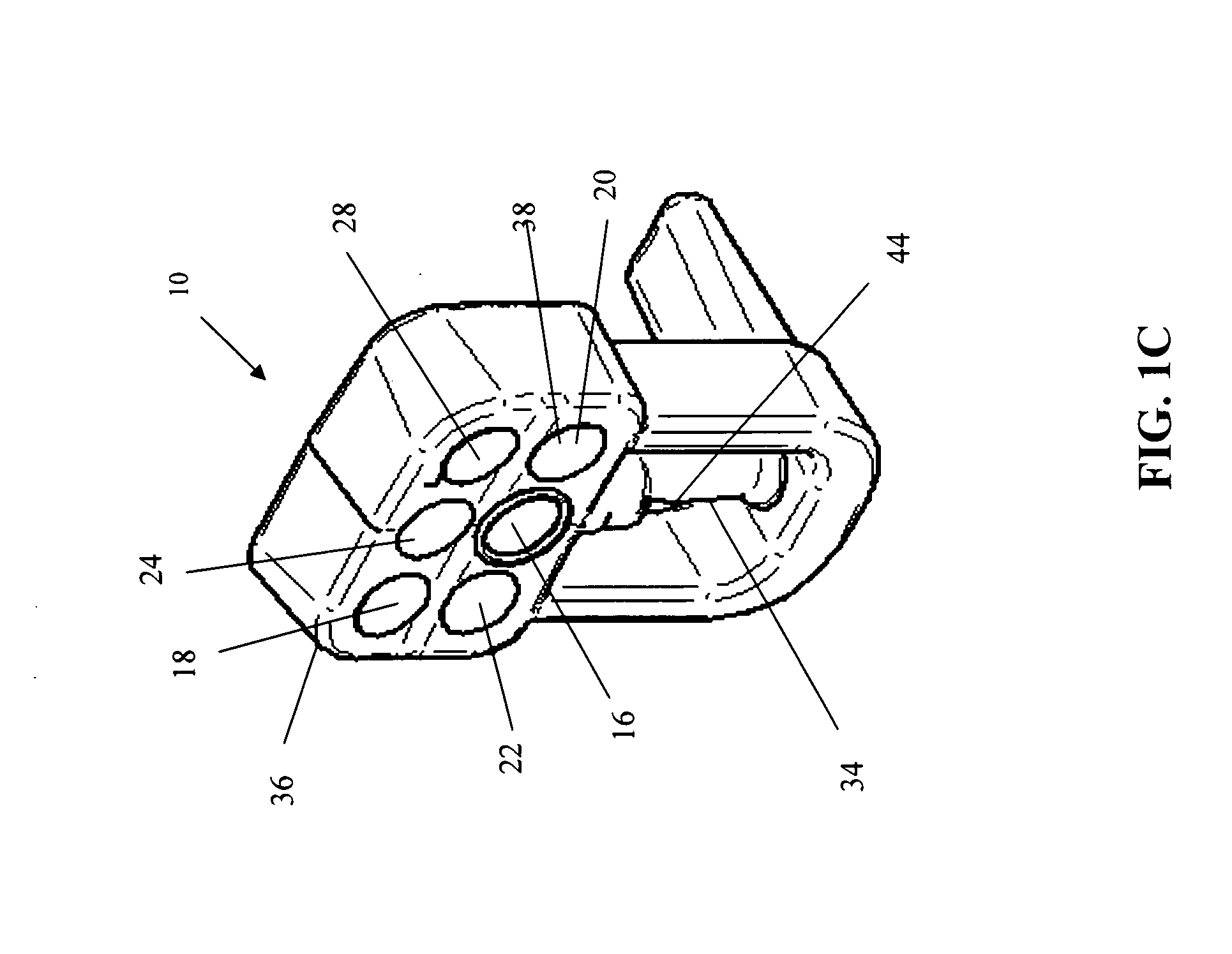Convergent parameter instrument
- Summary
- Abstract
- Description
- Claims
- Application Information
AI Technical Summary
Benefits of technology
Problems solved by technology
Method used
Image
Examples
Embodiment Construction
[0020]The present invention involves the integration of up to five imaging modules into a handheld convergent parameter instrument 10. Each imaging module utilizes a common control set 12 and a common display 14.
[0021]The first imaging technique is high resolution color digital photography, used for the purpose of medical noninvasive optical diagnostics and monitoring of diseases. Digital photography, when combined with controlled solid state lighting, polarization filtering, and coordinated with appropriate image processing techniques, derives more information that the naked eye can discern. Clinically inspecting visible skin color changes by eye is subject to inter- and intraexaminer variability. The use of computerized image analysis has therefore been introduced in several fields of medicine in which objective and quantitative measurements of visible changes are required. Applications range from follow-up of dermatological lesions to diagnostic aids and clinical classifications ...
PUM
 Login to View More
Login to View More Abstract
Description
Claims
Application Information
 Login to View More
Login to View More - R&D
- Intellectual Property
- Life Sciences
- Materials
- Tech Scout
- Unparalleled Data Quality
- Higher Quality Content
- 60% Fewer Hallucinations
Browse by: Latest US Patents, China's latest patents, Technical Efficacy Thesaurus, Application Domain, Technology Topic, Popular Technical Reports.
© 2025 PatSnap. All rights reserved.Legal|Privacy policy|Modern Slavery Act Transparency Statement|Sitemap|About US| Contact US: help@patsnap.com



